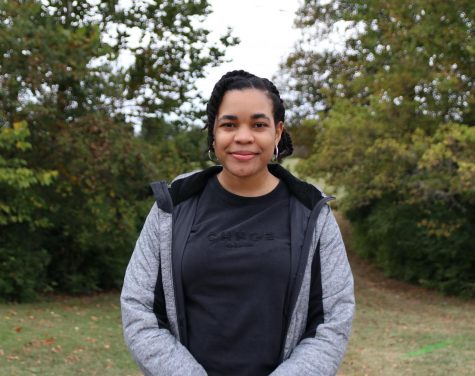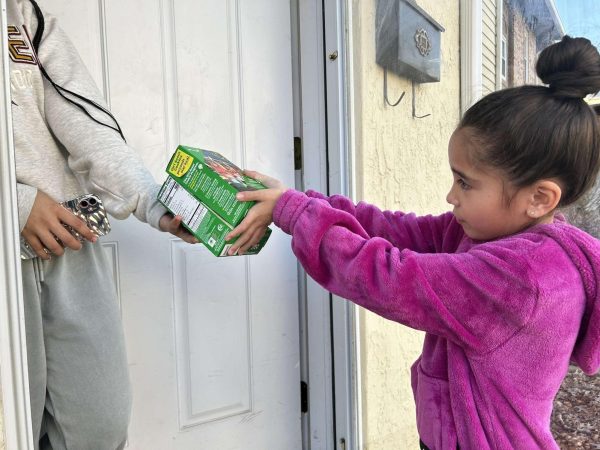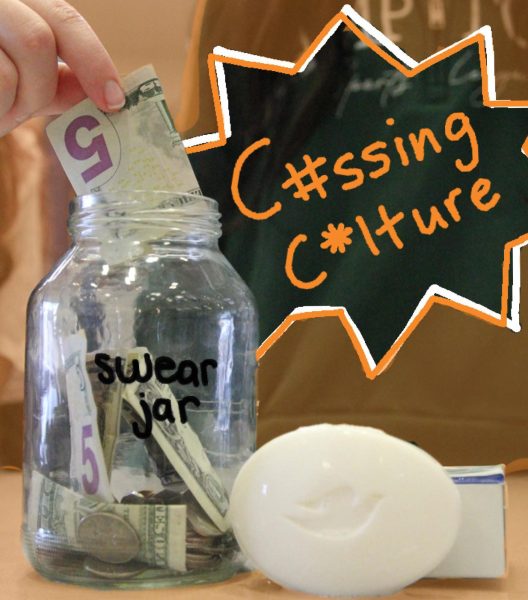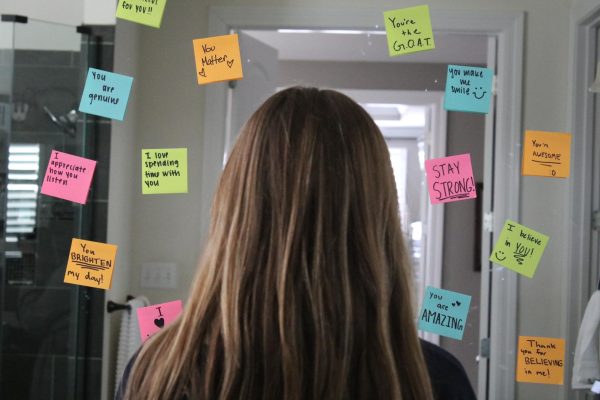Black Americans Face Disproportionate Effects of COVID-19
Media by Kaliah Rodgers
Kaliah Rodgers, senior, sits atop her bed, trying to be productive as the effects of the coronavirus pandemic looms over her.
Sam Hall, junior, felt anxious and saw a decline in her mental health after the COVID-19 pandemic took two lives in her extended family and her sense of familial connection.
“Because we weren’t able to have a funeral, it was really hard to wrap your mind around the reality of the situation,” Hall said. “We had a parade, and we were together, but I couldn’t hug my god sister. I couldn’t be there physically and that hurt.”
Hall has seen a gradual detachment from her family outside her home, including close neighbors, who have seen their weekly prayer rituals and casual visits cancelled due to fear of spreading the coronavirus.
She is not alone in her feelings of despair. Hall is a member of the black community and is aware of the disproportionate effects of COVID-19 onto her racial and ethnic community across states, counties and cities.
In St. Louis City, blacks account for about 64 percent of COVID-19 cases and of deaths, while about 25 percent of cases and 30 percent of deaths were from whites, according to the St. Louis City website. However, about 47 percent of the city population is black and 46 percent of the population is white, according to the U.S. Census Bureau.
Primarily, this is due to factors such as living conditions, employment circumstances, underlying health conditions and access to healthcare as well as systemic, structural racism and racial residential segregation.
For instance, blacks are more likely to be obese and have higher death rates for issues like heart diseases, stroke, asthma, hypertension and diabetes than whites, according to the U.S. Department of Health and Human Services—all conditions that dampen the immune system.
In Greater St. Louis, blacks are more than twice as likely as whites to be uninsured, and blacks are more than three times as likely to be in poverty than whites, according to the U.S. Census Bureau.
When Hall lived in downtown St. Louis, she said she saw stark disparities there in comparison to the county: lower access to quality food, education and health services; densely populated areas; higher levels of sanitation and environmental issues and greater fears of violence while playing outside.
Hall said historical race-based discrimination may play a role in current racial disparities.
“Throughout American history, blacks and other minorities have been mistreated by whites in power,” Hall said. “Most notably there is slavery, Jim Crow laws, the war on drugs, and now, mass incarceration and police brutality. It’s just a vicious cycle.”
Dr. Sean Joe, MSW, Benjamin E. Youngdahl Professor of Social Development, said historically, how a society is structured, how opportunity and access to care is afforded and the quality and capability of infrastructure impacts individuals’ physical and geographical susceptibility and vulnerability to COVID-19.
“When you look at the disproportionate number of blacks who are dying, it means unequal access to treatment and resources also impact that population not only for contracting COVID, but potentially for treating COVID and the recovery,” Dr. Joe said.
Also, Dr. Joe said the historical impact of racism and housing segregation, including where people were allowed to settle, who had access to capital and a variety of formal and informal policies contributed to the racial and income disparities within St. Louis as well as a greater risk to COVID-19.
“In North City, you don’t have a plethora of large grocery chains,” Dr. Joe said. “These areas are food deserts, banking deserts, financial capital deserts, and those are structural things that are sown into the geography.”
Dr. Joe said the differences between residents who have control over an area’s environmental structure and those who have little control allows for social policies and social stances to impact one’s living circumstances.
For example, blacks are 12 times as likely to live in neighborhoods of concentrated poverty than whites, which can affect rates of illness amongst blacks as local policies or discretion of landlords affects garbage accumulation and a lack of cleanliness.
Rising waves of grief associated with death, economic turmoil and familial stress in the black community are of concern to Dr. Joe, and he said disproportionate issues with the healthcare system’s ability to serve blacks is a challenge the pandemic is highlighting and needs to be addressed.
“Anxiety and anxiety related mental health illnesses is what we need to pay attention to as well as increased psychological distress, irritability, frustration and anger,” Dr. Joe said. “As families are going through these increased stressors while isolated, that can lead to potential abuse of children and spouses.”
In response to national concern of disproportionate and violent arrests of people of color for social distancing violations and other charges, which can be seen in viral videos, Dr. Joe said the pandemic is shining light onto the impact of race based and structural policies affecting violence against different groups.
“That’s what we are seeing where one group is able to violate the policies and sheltering while other groups are severely treated in disproportionate engagement in policing,” Dr. Joe said. “That’s not new, but it’s showing that we have a unique opportunity as a nation to do things in a different way.”
Chief Executive Officer of the Regional Health Commission Angela Fleming Brown said transportation is a barrier for those in low income communities and those especially in North County, a COVID-19 hotspot, due to high bus capacity and greater distance from testing cities and hospitals.
“When you look at St. Louis, our first testing site was opened up in Chesterfield, which is a privileged, majority white, average to high income community,” Brown said. “One month later, we got the first site in North St. Louis. How did you not think to put those sites in areas with high rates of chronic disease, high rates of poverty, high rates of elderly and of people who are not able to social distance?”
Due to the expense of health insurance in the U.S., Brown said inequities and discrimination in the healthcare system against low income and blacks arises as professionals avoid serving the underinsured because it lacks reimbursement. Without health insurance, many lack access to a doctor, which is a requirement for COVID-19 testing.
“Our healthcare system has historically discriminated against low income, people of color and underserved communities, so it creates that narrative, and it definitely has been noticeable in our response,” Brown said. “We have always forgotten about our underserved communities, and it shows in issues like where resources are being allocated.”
Brown said issues like diabetes and hypertension are associated with exercise, and for those in the city with areas of high violence or lacking sidewalks, it can increase the rate of chronic disease and impact of COVID-19. Also, historical red-lining and ‘white-flight’ in St. Louis developed low income communities with densely packed homes, supplementing the infection rate.
This poses a problem as blacks are overrepresented in frontline industries, and they have seen the second highest unemployment rate of 16.7 percent, according to the Bureau of Labor Statistics.
Brown said staying at home and social distancing is often not an option, and she has seen reports of workers lacking proper gloves, masks or protective training, an issue she said is prominent in St. Louis.
Kaliah Rodgers, senior, said it’s disheartening to see individuals not emphasize safety precautions and recommendations unless they are emotionally affected.
“I know someone affected by coronavirus who passed away from it,” Rodgers said. “If someone I know that was related to me was able to catch it, then I’m not invincible. That was really an eye-opener. This is more serious than a lot of people are making it out to be.”
Unlike in white communities, Rodgers said many black families aren’t as informed about making good financial decisions, such as saving for one’s future, because historical employment discimination provided few opportunities for high paying jobs. She said these generational disparities resulted in many families who cannot afford a college education.
Due to current inequities from racial segregation in education, she said many families may not have a sufficient, accredited grade school education to be accepted to college.
“Black people make up the majority of essential workers because they are often unable to go to college,” Rodgers said. “Even if you do, you often haven’t been with the right people to get you through it, so black people often have to settle for socially lower paying jobs.”
Rodgers said the black community is abundant with single parent families, and their limited source of income causes difficulties, especially during the COVID-19 pandemic, for students and parents to meet basic needs.
“If you have to go to work, the children are at home and have to make meals for themselves, unlike if the child was going to school, which makes food run out faster,” Rodgers said. “The parents may not be able to pay for wifi connections all the time, or they have lower gigabytes, so that can make it so much harder to get any work done.”
Jailon Lyons, Class of 2019, said he often used DoorDash, a food delivery service, prior to the pandemic, and his drivers were usually white. Now, Lyons said almost every driver has been black. He said he connects this to essential workers’, especially for blacks, increased need for income while receiving low wages.
When he lived in Baden, Mo., and worked at Shop ‘n Save around predominantly black areas, Lyons said there wasn’t an option to be healthy as grocery stores lacked sufficient fruits and vegetables, and he said there isn’t enough resources in the city to improve health disparities.
“It’s really easy for individuals to say ‘be healthy and be fit’ when they have the privilege of having access to all the resources and materials they need to be good and okay,” Lyons said. “I shouldn’t have to drive anywhere from six to nine miles to get to a good, quality grocery store with good service.”
RSD Coordinator Education Equity and Diversity Brittany Hogan said this issue can be depicted at MHS, where grocery stores are abundant around the campus, which can play a role in differences in students’ physical health depending on where they live.
She said black peoples’ determination to survive, such as being frontliners, connects to the times of slavery as they have always been essential and have had to make difficult sacrifices. Hogan said racial inequities during the pandemic already existed, and COVID-19 will continue ravishing the black community until these issues are addressed.
“Being a black woman and being a part of my Chicago community and here, it’s terrifying, it’s scary and I feel very emotionally affected knowing what’s happening to people who look like me,” Hogan said. “Some people say they don’t believe racism exists, but COVID-19 has shown us how bad it is. If you have any doubt about what it means to be black in America, this is a clear reminder of that.”
Your donation will support the student journalists of Marquette High School. Your contribution will allow us to purchase equipment and cover our annual website hosting costs. You may become a PATRON by making a donation at one of these levels: White/$30, Green/$50, Blue/$100. Patron names will be published in the print newsmagazine, on the website and once per quarter on our social media accounts.

Lauren Pickett, senior, is the In-Depth Editor for the MHS Messenger. This is her second full year on staff. Also, Lauren participates in two other activities:...







